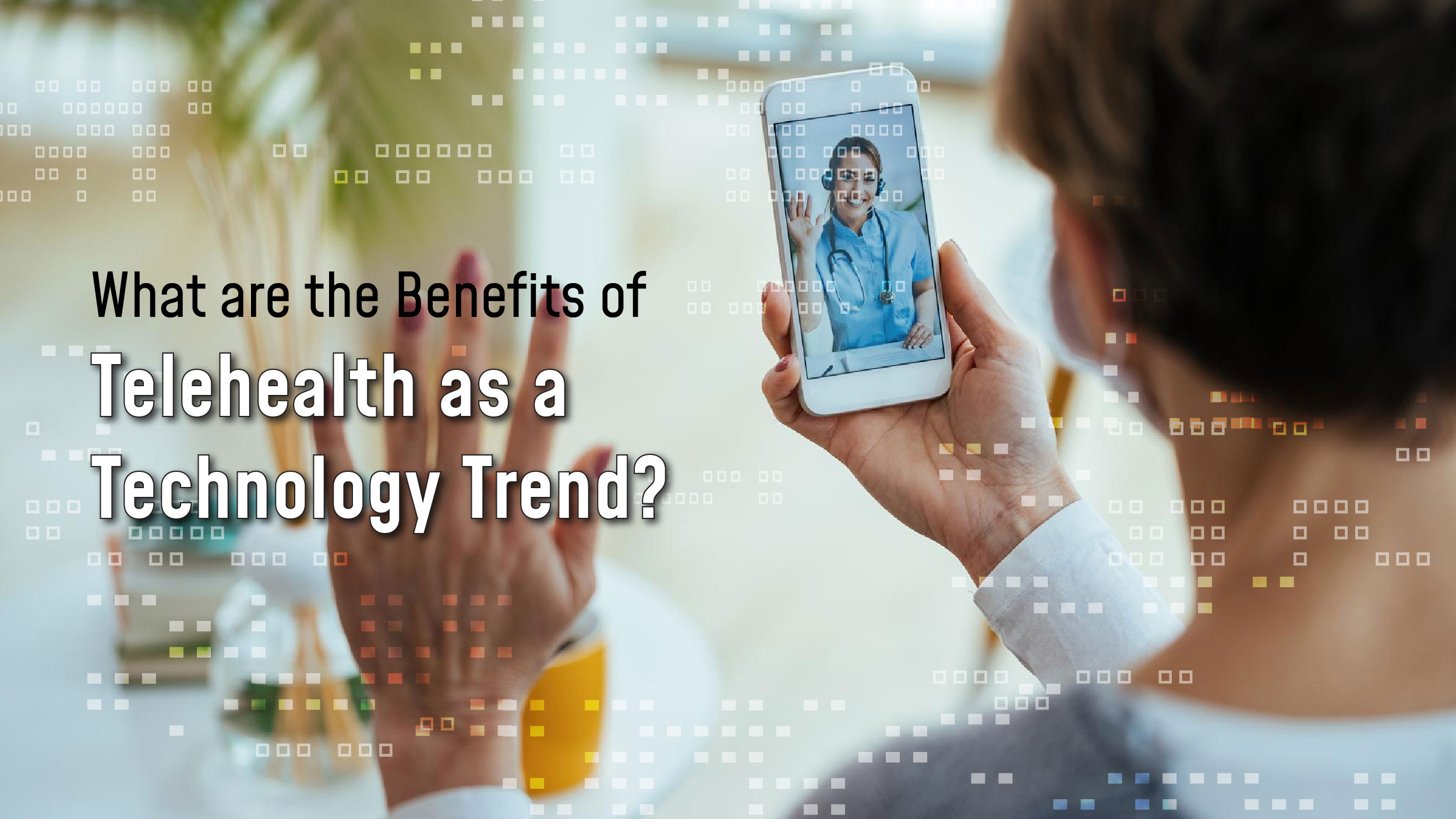Imagine being able to receive medical advice and care without leaving the comfort of your home. Thanks to telehealth, this scenario is becoming a reality. In this blog, we will explore the fascinating world of telehealth and delve into the latest trends that are changing how we receive healthcare.
From virtual doctor visits to remote patient monitoring, telehealth is revolutionizing the healthcare landscape, breaking down barriers and bridging the gap between patients and providers. Let us delve into the latest telehealth trends and explore how this digital frontier is shaping the future of healthcare delivery.
What are the Benefits of Telehealth as a Technology Trend?

Telehealth involves using telecommunications technology to provide healthcare services remotely. It makes the following things easy for doctors and patients:
● Recording Measurements
Measuring weight, food intake, blood pressure, heart rate, and blood sugar levels by hand or with a wearable gadget and transmitting them to the doctor is easy with the telemedicine platform.
● Virtual Tele-Communication
Patients can access virtual consultations with the doctor or nurse through a computer or smartphone.
● Online Portal
Checking test results, requesting prescription refills, sending a message to the doctor, or scheduling an appointment via an online portal is possible with telemedicine.
● Online Sharing
Sharing information with doctors, such as test results, diagnoses, prescriptions, and drug allergies becomes easy.
● Alerts and Reminders
Telemedicine apps or platforms send reminders and alerts for when you’re due for colonoscopies, mammograms, and other screenings, or daily vaccinations via emails or messages.
● Remote Care
Monitoring older patients from remote areas to keep track of their diet, sleep, and medications as per schedule is easy with telemedicine.
Top 5 Telehealth Trends Reshaping the Healthcare Industry

Telehealth makes many things possible with technological advancements. Here are the top telehealth trends in 2023 and beyond that will impact the overall industry in the coming years.
1. Artificial Intelligence (AI)
In a world where everything is available at a single click, the need for quick and automated responses for telehealth services is growing. AI is a highly profitable technology trend in the healthcare industry that can provide such automated services. The telehealth sector can benefit from AI immensely by using it to collect, manage, and process enormous user data for hospitals. AI telehealth also assists patients in booking virtual appointments and finding the nearest hospitals and doctor’s availability.
2. AR/VR
Augmented Reality and Virtual Reality are being used and implemented to better the patient as well as physicians’ experience. The application of VR in telehealth can assist in training physicians and surgeons to conduct and practice surgeries virtually. On the other hand, AR assists surgeons in their day-to-day capabilities and helps future medical professionals prepare for real-life surgeries. In a nutshell, both AR and VR will provide automated solutions to telehealth.
3. Digital Twins
Digital twins are digital models based on actual data that can be used to recreate any system or process. The technology is rapidly gaining popularity across a wide range of industries.
This trend in telehealth includes the concept of the “virtual patient” — digital replicas of real people who are used to test medications and therapies to speed up the process of getting new products from the research stage to widespread use.
Digital twins of human organs and systems are becoming more realistic, allowing medical professionals to study various pathologies and treatments without endangering specific patients. This technology is considered one of the most significant tech developments in telehealth in 2023, as it can help develop medicines more quickly and affordably. Examples include the Living Heart Project and the Neurotwin project, which investigate the relationship between electrical fields in the brain for Alzheimer’s disease treatments.
4. EHR-embedded Telecare
Electronic health records (EHRs) are used in practically every clinic, hospital, and private practice in the era of digitalization. It is the medical world’s symbol of seamless interoperability and patient file storage.
Telemedicine and telehealth systems offer unique EHR integration opportunities. Clinics that use an integrated EHR can smoothly transfer patient records to other practices.
Furthermore, the system makes it easier to update patient data. It also enables doctors to improve treatment delivery by providing patients with timely prescriptions, reports, and refills. Patients can also file insurance claims from the convenience of their own homes.
For instance, Blue Ridge Medical Group‘s athenaTelehealth, a virtual-care tool, provides an intuitive patient-care experience. The technology enables doctors to document telehealth visits directly to the electronic health record (EHR) during a visit, facilitating real-time patient examinations and efficient appointment movement. The AthenaTelehealth system enables video conference calls with patients, making documentation faster and easier.
5. Internet of Medical Things (IoMT)
The Internet of Things is a game-changer that will influence future technologies to be more efficient. Medical IoT is used by tracking devices such as smartwatches and activity trackers. Sensors and other technologies on these devices enable data flow between systems.
IoT devices are quite useful for remote patient monitoring. Clinicians can remotely monitor a patient’s heart rate and blood sugar levels. It also warns patients and empowers them to take control of their medical care.
For example, Boston Scientific’s LATITUDETM NXT Remote Patient Management System and Communicator seamlessly integrate important features with physician enhancement requests and patient feedback. The approach is intended to increase clinic efficiency while also providing higher-quality care to patients.
To Wrap Things Up
As we see above, telehealth is transforming the healthcare landscape, bringing convenience, accessibility, and efficiency to patients and medical providers alike. Recent advancements in technology have paved the way for virtual doctor visits, remote monitoring, and improved communication between patients and healthcare professionals.
Telehealth trends are revolutionizing how we access and receive healthcare, breaking down barriers of distance and time. As telehealth continues to evolve, it promises to enhance healthcare delivery, improve patient outcomes, and bridge gaps in healthcare accessibility. With its potential to revolutionize the future of healthcare, telehealth is undoubtedly here to stay, shaping a new era of patient-centered, connected, and efficient care.



